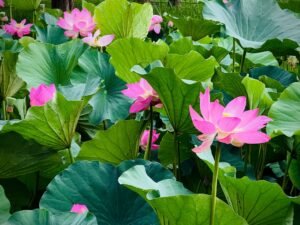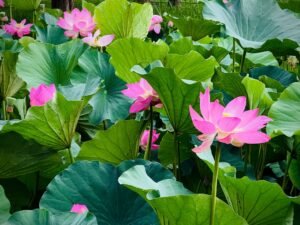

Top Phrases About Weather and Seasons in Norwegian
Norway, located in Northern Europe, is known for its stunning natural landscapes and diverse climate. The country stretches from the temperate coastal regions in the south to the Arctic tundra in the north, resulting in a wide range of weather conditions throughout the year. Understanding Norwegian weather and seasons is essential for both language learners and travelers, as it allows for better preparation and appreciation of the country’s unique climate.
Norway’s geography plays a significant role in its weather patterns. The country is characterized by fjords, mountains, and a long coastline, which greatly influence its climate. The warm Gulf Stream brings mild temperatures to the coastal areas, while the mountainous regions experience colder temperatures and more precipitation. Additionally, Norway’s proximity to the Arctic Circle means that it experiences polar nights in winter and midnight sun in summer.
Table of Contents
ToggleBasic Vocabulary for Talking About Weather in Norwegian
To effectively communicate about weather in Norwegian, it is important to learn some basic vocabulary and phrases. Here are some common weather-related words and phrases:
– Vær (weather)
– Sol (sun)
– Regn (rain)
– Snø (snow)
– Vind (wind)
– Skyer (clouds)
– Temperatur (temperature)
– Varmt (hot)
– Kaldt (cold)
– Tørt (dry)
– Fuktig (humid)
Pronunciation in Norwegian can be challenging for non-native speakers, but with practice, it becomes easier. For example, the letter “ø” is pronounced like the “u” in “hurt,” while “å” is pronounced like the “o” in “hot.” It is also important to pay attention to stress patterns in words to ensure correct pronunciation.
Describing the Four Seasons in Norwegian
Norway experiences distinct seasons throughout the year, each with its own characteristics. Here is an overview of the four seasons in Norway and some vocabulary and phrases to describe them:
1. Vår (Spring): Spring in Norway is a time of transition, as the snow melts and nature comes back to life. The days become longer, and temperatures gradually rise. Vocabulary and phrases for describing spring include:
– Blomster (flowers)
– Grønt (green)
– Vårlig (spring-like)
– Smelting av snø (snow melting)
– Lysere dager (brighter days)
2. Sommer (Summer): Norwegian summers are relatively mild, with temperatures ranging from 15 to 25 degrees Celsius. The days are long, and the country experiences the phenomenon of the midnight sun in the northern regions. Vocabulary and phrases for describing summer include:
– Solbriller (sunglasses)
– Bading (swimming)
– Grillfest (barbecue party)
– Strand (beach)
– Ferietid (vacation time)
3. Høst (Autumn): Autumn in Norway is characterized by vibrant colors as the leaves change and fall from the trees. The temperatures start to drop, and the days become shorter. Vocabulary and phrases for describing autumn include:
– Fargerike blader (colorful leaves)
– Kaldere vær (colder weather)
– Høststormer (autumn storms)
– Plukke sopp (mushroom picking)
– Innekos (cozy indoor activities)
4. Vinter (Winter): Winter in Norway is known for its snowy landscapes and freezing temperatures. The country offers a wide range of winter activities such as skiing, snowboarding, and ice fishing. Vocabulary and phrases for describing winter include:
– Snøfnugg (snowflakes)
– Skiføre (skiing conditions)
– Frost (frost)
– Julefeiring (Christmas celebration)
– Vinterferie (winter holiday)
Common Phrases for Talking About Temperature in Norwegian
When discussing temperature in Norwegian, it is important to be familiar with the Celsius scale. Here are some common phrases for talking about hot and cold weather:
– Det er varmt (It is hot)
– Det er kaldt (It is cold)
– Det er 20 grader (It is 20 degrees)
– Jeg fryser (I am freezing)
– Det er behagelig temperatur (It is a comfortable temperature)
Expressing Weather Conditions in Norwegian
To effectively describe different weather conditions in Norwegian, it is helpful to learn some vocabulary and phrases. Here are some words and phrases for describing different weather conditions:
– Solrik (sunny)
– Overskyet (cloudy)
– Regnfullt (rainy)
– Snødekt (snowy)
– Tåkete (foggy)
– Stormfullt (stormy)
– Lyn og torden (lightning and thunder)
Additionally, it is important to know how to talk about weather changes throughout the day. Here are some phrases for discussing weather changes:
– Det var sol, men nå er det overskyet (It was sunny, but now it is cloudy)
– Det begynner å regne (It is starting to rain)
– Været har blitt kaldere i løpet av dagen (The weather has gotten colder throughout the day)
Idiomatic Expressions for Describing Weather in Norwegian

Idiomatic expressions add color and depth to language, and Norwegian has several idioms related to weather. Here are some common idioms and expressions related to weather in Norwegian:
– Å være i sitt ess (To be in one’s element) – This expression can be used to describe someone who is thriving or enjoying themselves, just like the sun shining on a beautiful day.
– Å ha en is i magen (To have ice in one’s stomach) – This expression means to be calm and composed, even in difficult or challenging situations, just like ice remaining solid despite external conditions.
– Å være som en vind i seilene (To be like wind in the sails) – This expression is used to describe someone who is motivated and driven, just like wind propelling a sailboat forward.
Talking About Wind and Storms in Norwegian
Norway’s coastal regions are known for their strong winds and storms. Here are some vocabulary and phrases for describing wind and storms:
– Vindstyrke (wind strength)
– Orkan (hurricane)
– Storm (storm)
– Blåse (to blow)
– Vindkast (gust of wind)
When talking about severe weather conditions, it is important to use caution and prioritize safety. It is also helpful to know emergency phrases such as “Nødnummer” (emergency number) and “Hjelp!” (help!).
Vocabulary for Discussing Rain and Snow in Norwegian
Norway experiences varying levels of precipitation throughout the year, including rain and snow. Here are some words and phrases for talking about precipitation in Norwegian:
– Regndråper (raindrops)
– Snøfnugg (snowflakes)
– Sludd (sleet)
– Hagle (hail)
– Regnbue (rainbow)
It is also useful to know how to describe different types of rain and snow. For example, “lett regn” means light rain, while “tung snø” means heavy snow.
Weather-Related Activities and Hobbies in Norwegian
Norwegians embrace the outdoors and engage in various weather-related activities and hobbies. Here are some popular outdoor activities and hobbies in Norway:
– Skitur (skiing trip)
– Fisketur (fishing trip)
– Fjelltur (mountain hike)
– Sykkeltur (biking trip)
– Båttur (boat trip)
Knowing the vocabulary and phrases related to these activities allows for better communication and participation in Norwegian culture.
Cultural Significance of Weather and Seasons in Norwegian Society
Weather and seasons play a significant role in Norwegian culture and daily life. Norwegians have a deep connection to nature and often engage in activities that are influenced by the weather and seasons. For example, the celebration of Midsummer’s Eve, known as “Sankthansaften,” takes place during the summer solstice when the country experiences the midnight sun. This celebration involves bonfires, music, and dancing.
Another example is the tradition of “kos” during the winter months. Norwegians embrace the concept of coziness and spend time indoors with loved ones, enjoying warm drinks, candles, and comfort food.
Conclusion
Understanding Norwegian weather and seasons is essential for language learners and travelers alike. Norway’s diverse climate and stunning landscapes make it a unique destination, but it also requires preparation and adaptation to changing weather conditions. By learning basic vocabulary, phrases, and cultural nuances related to weather and seasons, individuals can better navigate conversations, engage in outdoor activities, and appreciate the beauty of Norway’s natural environment.
FAQs
What are some common phrases related to weather in Norwegian?
Some common phrases related to weather in Norwegian include “Det regner” (It’s raining), “Det snør” (It’s snowing), “Det blåser” (It’s windy), and “Det er sol” (It’s sunny).
What are some common phrases related to seasons in Norwegian?
Some common phrases related to seasons in Norwegian include “Det er vår” (It’s spring), “Det er sommer” (It’s summer), “Det er høst” (It’s autumn), and “Det er vinter” (It’s winter).
What is the Norwegian word for “weather”?
The Norwegian word for “weather” is “vær”.
What is the Norwegian word for “season”?
The Norwegian word for “season” is “sesong”.
What are some other weather-related words in Norwegian?
Some other weather-related words in Norwegian include “regn” (rain), “snø” (snow), “vind” (wind), and “sol” (sun).
What are some other season-related words in Norwegian?
Some other season-related words in Norwegian include “blomster” (flowers), “gress” (grass), “bær” (berries), and “skog” (forest).
Is Norwegian a difficult language to learn?
Norwegian can be a difficult language to learn for English speakers due to its complex grammar and pronunciation. However, with practice and dedication, it is possible to become proficient in the language.
Are there any resources available for learning Norwegian?
Yes, there are many resources available for learning Norwegian, including language courses, textbooks, online resources, and language exchange programs.
If you want to learn Norwegian, you can register for classes here. We look forward to hearing from you and helping you become fluent in Norwegian!
Refer a friend and get $150. Join the program here
If you want to learn Norwegian, you can register for classes here. We look forward to hearing from you and helping you become fluent in Norwegian.





